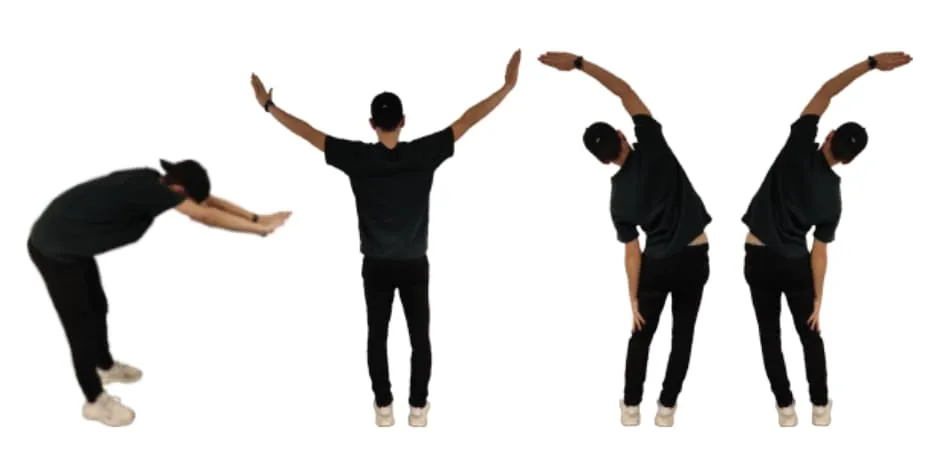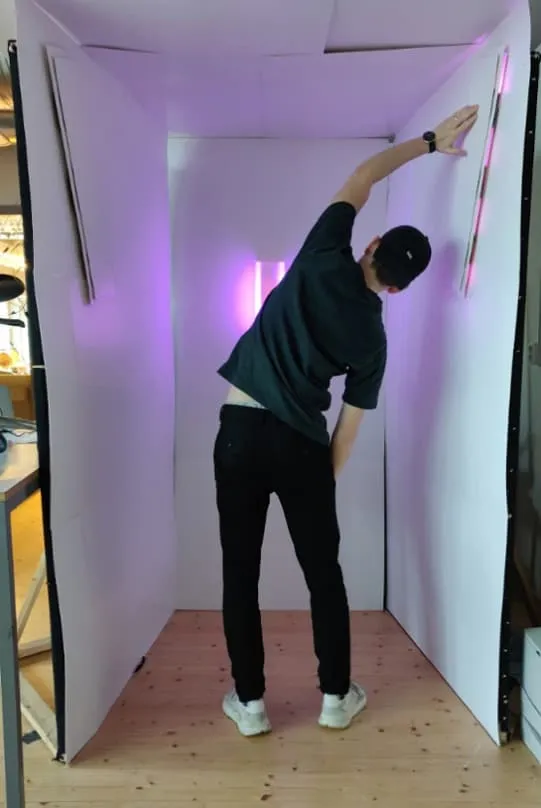We wanted to create a product to help students relieve stress during the school day. Our prototype is an interactive experience, a guided meditation, where the user is guided through movement and breathing with the help of visual elements. In this project we present an implementation of a prototype together with a study demonstrating that guidance through visual elements interfered with the user’s ability to cope with following the breathing and movement cycle.

When using the prototype, the user first enters the room and positions himself within an arm’s length distance from the three walls, facing the middle wall. By pressing the button on the left wall, the program starts, and the user follows the breathing pattern visualized by the 4 LEDs on the front wall. After two breathing cycles, the two buttons on the left and right wall will light up and afford the user to press both of them down while continuing breathing. The next step of the interaction consists of two regular breathing cycles where no button needs to be pressed. The third step is visualized by the button on the left lighting up, affording the placement of the right hand on the button while breathing for two cycles. The interaction continues in the same manner, while different buttons light up, creating an interaction consisting of breathing continuously with the flow of the LEDs and positioning the body according to the buttons that light up, creating a calm and meditative experience.

The study showed that the visual representation of the breathing had a positive effect on the user’s ability to focus on the breathing. The study also showed that the visual signifiers showing the user which button to press did not have a positive effect on guiding the users, but rather confused the user leading to a disturbance in the interaction.

Future research will focus on refining and evaluating the validity of visual feedback. Furthermore, we would like to investigate the usage of olfactory as a means of portraying feedback based on studies showing that the olfactory bulb has a direct connection to the amygdala and hippocampus, which are the two areas in the brain that controls emotions and memories. This is different from other senses like touch, sight and sound that instead go through the thalamus. What makes this interesting is that while smell is processed by the brain, it does not interrupt an ongoing brain process as easily as impressions on other senses does. Research will be conducted on whether the use of olfactory can be used to guide a user without disturbing the state of meditation. It would also be interesting to elaborate on sequences of movements together with professional Feldenkrais instructors. We concluded that lights guiding a user’s movement might not be the most suitable option during a relaxing exercise, as it demands a lot of attention from the practitioner, future work would include finding a less invasive way conveying the information.